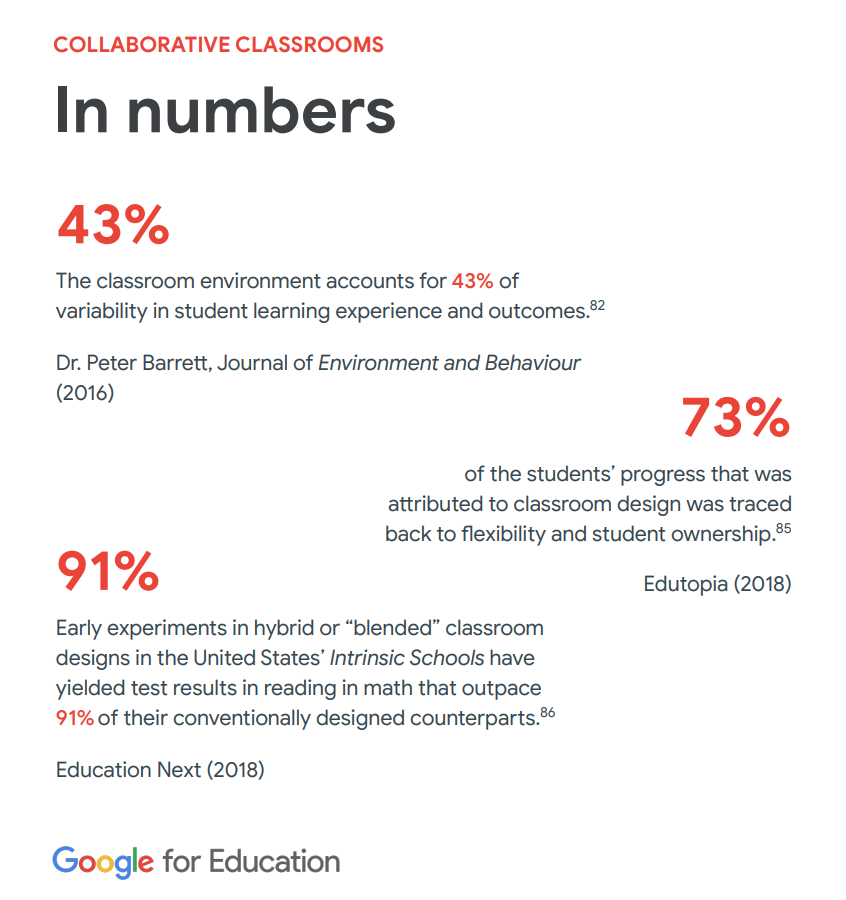Creating a Well-Designed Learning Space
Every year, when summer was in full swing and my teacher batteries were nearly full, it never failed– I would move into classroom planning mode. I don’t mean the curriculum stuff, but fun planning like classroom desk arrangements, wall decorations, and bulletin boards. I would head to Pinterest or Teachers Pay Teachers to find the perfect posters to match our carefully selected classroom theme for the year. So much time and energy and money went into these efforts, with the hopes that it would have a positive impact. But a recent study found the opposite to be true– children are more likely to be distracted in a highly decorated classroom.

As we embrace more teaching and learning practices that offer our students a voice and choice in designing how they learn, it follows that we should allow for that same sense of empowerment in designing the place where the learning happens. Flexible, inviting spaces with student needs at the center have the potential to create feelings of safety and relevancy, which then lead to a willingness to engage. Spaces where students have a say in where materials are kept, how tables are arranged and what goes on the walls, can do just that.
Before you go searching Pinterest or Instagram for the perfect classroom to emulate next year, check out these easy 5 tips.
1. Assess your needs
The first step is to think about your approach to learning. Now that you’re working directly with students to plan your classroom space, it’s important to gather their input on what the priorities are. The answers will serve as your planning guide. Ask yourself and your students the following questions:
- What is the purpose of our learning space?
- How will the space(s) be used and by whom?
- How can we make the shared space inclusive and effective for all?
- What kind of behaviors and habits do we want the space to encourage?
2. Plan your space WITH students
When students’ ideas and identities are reflected in the learning space, they feel more comfortable and engaged which can lead to greater academic and social-emotional growth. Watch this inspirational video on one teacher’s journey to include student input in her classroom design:
Gather student input in designing…
- A place to gather for whole-class discussions or circle time.
- A place to collaborate where groups can work efficiently.
- A place to create and access materials with ease.
- A place for quiet reflection or independent work.
3. Keep it Simple
Easy changes such as dim lighting, comfortable seating, and soft music can make a big difference. Simple editing of materials and furniture may be just what your classroom needs. Evaluate your space with your needs in mind and eliminate excess clutter that doesn’t fit the purpose and utility you’ve established with students.
4. Showcase Student Learning
Ditch the store-bought posters and instead, use your walls (inside and outside of the classroom) to display student work products as well as the learning process involved. Think about ways you can make the walls interactive and how you might engage a wider audience (ie, other classrooms, parents, and families). Here’s a recent blog post with some practical ideas on How and Why to Use Your Walls.
5. A Work in Progress
Remember, the quest to create the ideal learning space may take time. Provide opportunities to reflect on how the space is working for all parties and don’t be afraid to change course if something isn’t working. Classroom design is an ongoing process!
Check out these additional resources on classroom design and organization:
- Read our recent blog post on Tips to Organize and Declutter Your Classroom
- For thoughts, ideas and hacks on learning space design read, The Space: A Guide for Educators.
- Watch this video outlining design elements in the Montessori classroom–A Child-First Approach to Classroom Design.







